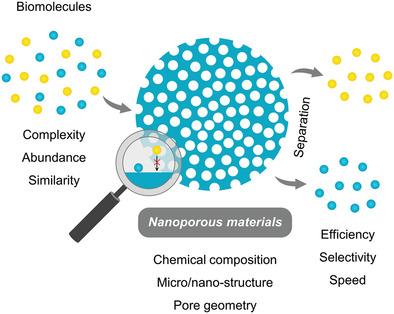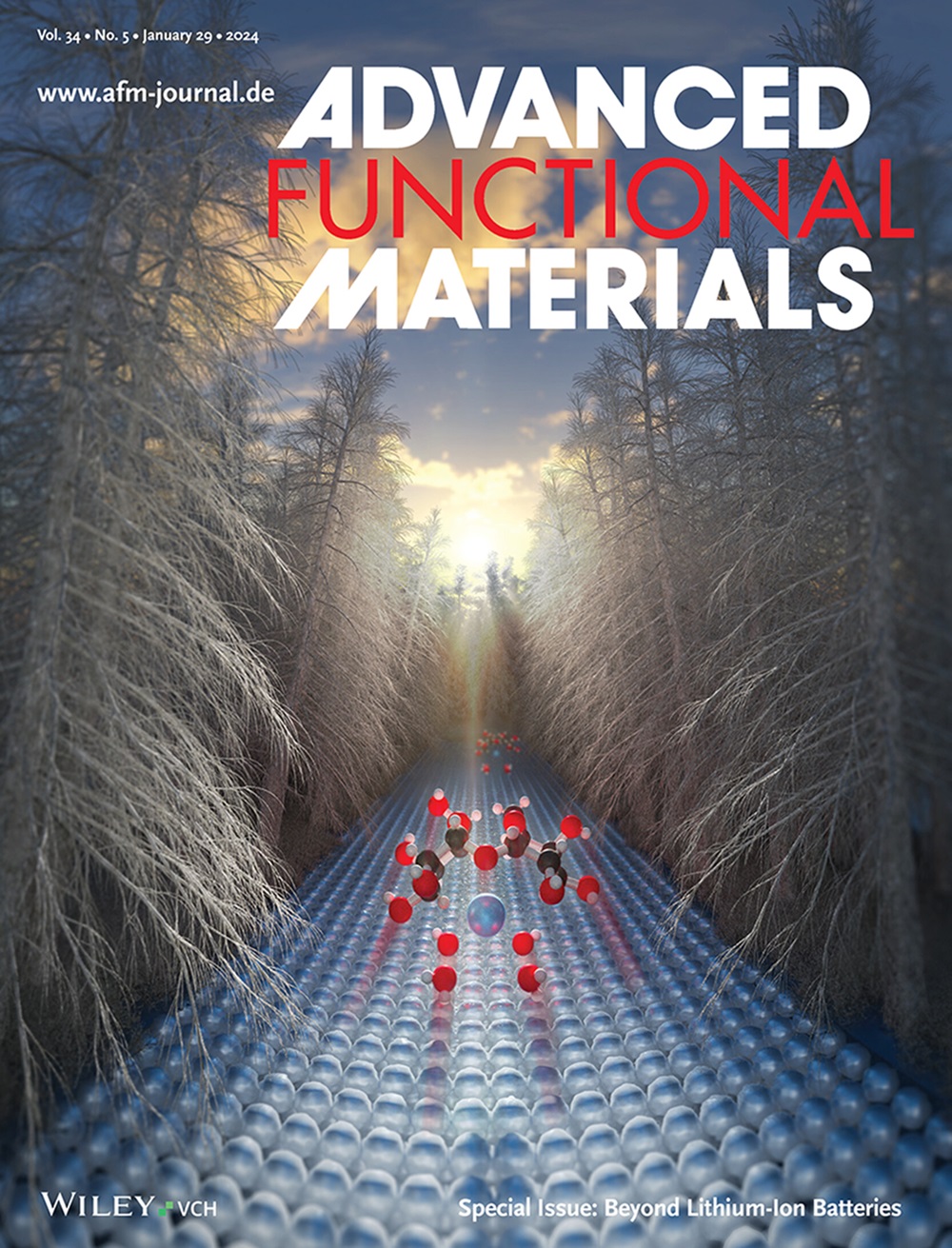Emerging Nanoporous Materials for Biomolecule Separation
IF 18.5
1区 材料科学
Q1 CHEMISTRY, MULTIDISCIPLINARY
引用次数: 7
Abstract
Biomolecule separation plays a vital role in downstream applications ranging from omics research, structure analysis, and drug purification to clinical diagnosis. Among all existing materials and technologies towards biomolecule separation, nanoporous materials take the leading place. To achieve efficient biomolecule separation, the interface of nanoporous materials is always modified with a monolayer containing specific functional groups. However, the monolayer modification strategy still encounters bottlenecks due to extremely low abundance of target biomolecules, strong interference from high‐abundance background biomolecules, similar characteristics of compounds, unspecific adsorption, et al. Recently, several emerging nanoporous materials, which are prepared without the monolayer modification process, have been reported for high‐efficient, high‐specific, and rapid biomolecule separation. In this review, the authors summarize the emerging nanoporous materials for biomolecule separation, mainly focusing on the design principle and separation performance that are different from classical nanoporous materials. First, the classic design strategy of monolayer modification is discussed and the recent progress with this aspect is introduced. Then, emerging nanoporous materials beyond monolayer modification are introduced. At last, future developments, challenges, and great promise of biomolecule separation nanoporous materials are discussed.

用于生物分子分离的新型纳米多孔材料
生物分子分离在从组学研究、结构分析、药物纯化到临床诊断等下游应用中起着至关重要的作用。在现有的生物分子分离材料和技术中,纳米多孔材料处于领先地位。为了实现高效的生物分子分离,纳米多孔材料的界面总是被修饰成含有特定官能团的单层。然而,由于靶生物分子丰度极低、高丰度背景生物分子干扰强、化合物特性相似、非特异性吸附等原因,单分子修饰策略仍然遇到瓶颈。近年来,一些未经单层修饰的纳米孔材料被报道用于高效、高特异性、快速的生物分子分离。本文综述了用于生物分子分离的纳米多孔材料的研究进展,重点介绍了纳米多孔材料的设计原理和不同于传统纳米多孔材料的分离性能。首先,讨论了单层改性的经典设计策略,并介绍了这方面的最新进展。然后介绍了超越单层改性的新兴纳米多孔材料。最后讨论了纳米孔材料在生物分子分离方面的发展前景、面临的挑战和前景。
本文章由计算机程序翻译,如有差异,请以英文原文为准。
求助全文
约1分钟内获得全文
求助全文
来源期刊

Advanced Functional Materials
工程技术-材料科学:综合
CiteScore
29.50
自引率
4.20%
发文量
2086
审稿时长
2.1 months
期刊介绍:
Firmly established as a top-tier materials science journal, Advanced Functional Materials reports breakthrough research in all aspects of materials science, including nanotechnology, chemistry, physics, and biology every week.
Advanced Functional Materials is known for its rapid and fair peer review, quality content, and high impact, making it the first choice of the international materials science community.
 求助内容:
求助内容: 应助结果提醒方式:
应助结果提醒方式:


